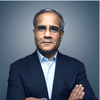The Four Forces Driving Future Change

Four shifts will reshape our future. They are technology, power, boundaries and mindset shifts.
The Four Shifts: An Overview
This is the first of a series on The Four Shifts already underway that will revolutionize every aspect of society and business.
1. Technology Shifts.
2. Power Shifts.
3. Boundary Shifts.
4. Mind Shifts.
Technology Shifts
Today a series of revolutionary technologies have all reached a critical momentum.
Each one interacts with the other creating exponential advances.
a) Artificial Intelligence: Over the past decade AI has been progressing at a rapid pace doubling its capability every 10 to 14 months. One flavor of AI, Regenerative AI, as illustrated by Chat GPT and Dall-E-2 has seized the imagination and indicate the revolutionary potential of these technologies.
b) Gene Therapy: Building on a detailed understanding of the human genome and leveraging modern computational power and AI we have already seen the first break through drugs in the BioNTech and Moderna MRNA vaccines.
c) 5G: The smart phone and continuous connectivity have re-configured business and consumer behavior this past decade. Two aspects of 5G in 200X faster speeds and almost zero latency to less than 1 nano second will turbo charge this impact. Remote surgery and ultra-small devices connected at blazing speeds to computation in the cloud will enable a range of new devices and behaviors.
d) Blockchain: While tarnished by the crash of crypto and the Ponzi like nature of many projects the underlying mathematics and potential of the Blockchain continues to be invested in not just by Silicon Valley but all the major banks and many large companies.
These are just four of the key technologies that have advanced dramatically over the past few years, both independently from and intertwined with each other.
Power Shifts
Driven in part by technology and in part by demographics, power is moving from the center to the edge in three significant ways.
a) From the West to the East: Earlier this week I was in India for the first time in 3 years and on a drive from Thane (about 30 miles from Bombay) to the city reminded me of being in Shanghai a decade or more ago. Infrastructure everywhere. Temples were optimized for digital donations. Food delivery was not just fast but inter-city. Almost every friend wished they were 30 years old again. The optimism and momentum were infectious.
The same feeling was felt on trips to Singapore and other parts of Asia. China while challenged is going to continue to rise. And even as companies re-allocate resources out of China, they still have significant presence there and much of the re-allocation is to India, Vietnam, and other Asian countries. Companies like Starbucks see China as a key to their future.
Africa is the only continent whose population will increase significantly in the next 25 years from 1.3 billion to nearly 2 billion plus people accounting for 25 percent of the world’s population by 2050 and potentially 40 percent of the world’s population by the end of the decade.
Globalization continues but shifts to a multi-polar globalization with many seats of power and impact such as China and India today and Nigeria and other countries tomorrow.
b) From Institutions to Individuals: Technology and individual agility is moving power from institutions to individuals. In every industry we see empowered customers and consumers armed with data, technology, and networks (Blockchain and AI technologies will exponentially empower individuals and smaller firms in most cases).
c) From Consolidated to Fragmented: We may have seen peak returns to scale in many industries. While scale continues to matter greatly the top 2 or 3 leaders in every industry appear to be losing share to several upstarts serving a range of different needs. Moats like a social graph did not prevent TikTok from impacting Facebook. ChatGPT may enable Bing to gain share over Google. One of the most interesting things about Search Engine Marketing is that it works because Search does not work well enough. If you got what you were looking for would you click around trying to find the answer?
Boundary Shifts
The future does not fit in the containers of the past. Technology and globalization are like hydrochloric acid. They burn through boundaries. We see digital leakage.
a) The Office/Home Boundary: Two years after a vaccine most downtown offices have 50 percent or less occupancy. Nearly 15 percent of employees have moved 500 miles from where they had worked prior to Covid. Companies are either totally remote or “Hybrid” with 40 percent or so of time being mandated for in person interaction to maximize culture, learning, delivery standards and ideation. Very few service-based companies will ever go back to 2019. And even in-person interaction is often at events, restaurants and offsite with offices themselves being completely re-designed.
b) Blurring of Behaviors: If you watch a video on TikTok and click on an ad which has an embedded commerce call to action allowing you to pick up the product from a local Walmart how does one that define this by the old rules of marketing and customer journey? Was it online (TikTok) or offline (Walmart pick up). Was it above the line (a brand ad) or below the line (a sale)? Was it video or mobile or e-commerce or social? People have changed and most companies are organized for a world of clean lines versus blurred lines. Today every point of contact is both a tattoo moment to build a brand and complete a sale.
c) Multi-Dimensional Companies: For the last couple of days, I was at CES (Consumer Electronics Show), where I had the opportunity to speak to the leadership of many companies to help frame their learning journeys.
Walking around it was so clear that companies were now morphing into multi-dimensional players. Huge signs for Samsung Ads, Netflix Ads, Best Buy Ads and much more were everywhere. Amazon Ads now had their own location and no longer were bundled with Amazon Web services and the momentum of Walmart Connect was spoken about. What were technology, streaming and retail companies were also now advertising juggernauts combining their first party data, customer knowledge, brand reputations and willingness to partner to create a new multi-dimensional landscape.
Mind Shifts
Human minds are like champagne corks. With new experiences and interactions, they swell and expand. And they no longer fit back into the bottle they emerged from.
During the past 1000 days everybody in the world has gone through a social, health, government, business and personal crisis because of COVID, rapidly shifting economies and other changes.
This has exposed the fault lines in society and business that existed before 2019. New technology breakthroughs and work behaviors have created secondary and tertiary shocks -- and people are different.
The future does not fit in the mindsets of the past.
a) Generational Mindshift: Recently I completed the first chapter of my new book (which will be published globally by McGraw-Hill in 2024) called Re-Thinking Work. The opening chapter begins with a deep dive into the societal changes including the fact that for the first time in modern history four or even five generations will be working together. After completing research on one area which was the generational differences between Gen Z/Millennials and GenX/Baby Boomers, what was vividly clear is that most businesses are focusing on almost all the wrong things as they try to get their employees re-engaged.
Most boards and political leaders are Boomers and GenX, which explains a lot of the rumble in the work jungle and the political world.
b) The Role of Work: Work is important, and people are willing to work hard. "Quiet Quitting" is less about quitting work then quitting bosses. While companies are grappling with where people work, most folks are asking, Why do they work? Who do they work for? When do they work? And most importantly, What is Work?
Next Week: The Implications of The Four Shifts.
What will the implications of the Four Shifts be on individuals, governments and business as they accelerate, intertwine and morph? If strategy is "future competitive advantage" how do individuals, leaders and companies ensure relevance and resonance in the coming world?
Click the social buttons to share this story with colleagues and friends.
The opinions expressed here are the author's views and do not necessarily represent the views of MediaVillage.com/MyersBizNet.


